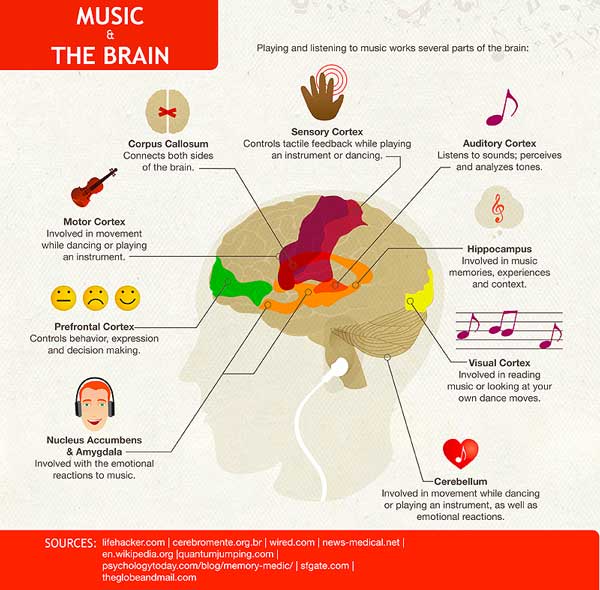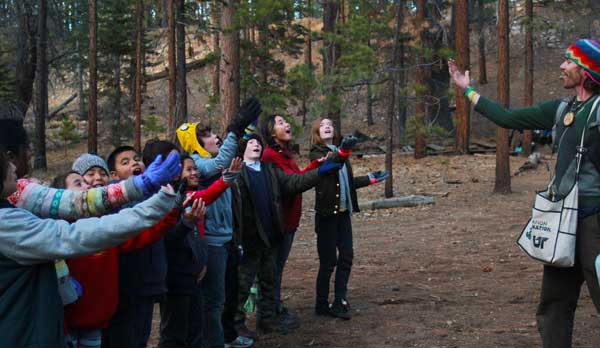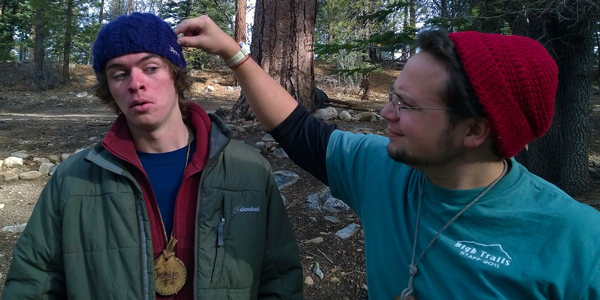“Alright class, it’s time to earn our beads for our Furry Friends class. Let’s review what you can remember about adaptations of mammals. John, tell me at least one characteristic of a mammal?”
Uhhh….
Uhhh oh is right. I just taught this to them. However, I have a secret trick up my sleeve. “What about the Mammals Song we sang?
Mammals have lungs that breath the air…Oh! Warm blooded creatures that have fur or hair!
 One of my favorite teaching techniques is teaching through music. How many songs from elementary school can you still remember to this day? At least a couple I’m sure.
One of my favorite teaching techniques is teaching through music. How many songs from elementary school can you still remember to this day? At least a couple I’m sure.
The simplest example is the alphabet song, but I’m sure everyone remembers Schoolhouse Rock, too. It’s a crazy thing, realizing that you can still recall the tunes to those songs you learned so many years ago.
I thought about this and realized…whoa, this must really work.
But WHY does this work?
Music can be used as a mnemonic device for learning new information and providing motivation for learning. The learning of this new information happens when mnemonic devices (in this case, musical strategy) help transfer the information from the brains Short-Term Memory (STM), which has a retention time of about 18 seconds, to Long-Term Memory (LTM).
Once it is stored here, melody, rhythm, rhyme, and imagery act as cues to quickly retrieve this information stored in LTM. The motivation happens when students are given a choice between a lecture, and singing a song. Studies show students tend to have more fun singing or listening to music.
Study #1
Four knowledgeable individuals, Campabello, De Carlo, O’Neil, and Vacek (2002) 1 chose three elementary schools for their “Music Enhances Learning” research project. They wanted to see if they could improve students’ skills and knowledge of curriculum, as well as involvement in class using musical strategies and mnemonic devices. They conducted research in a kindergarten, second, and fifth grade classroom. The results were good. Both researchers and teachers reported that students test scores improved, as well as their participation and motivation towards learning.
Study #2
Another study focused on the effects of using musical strategies on a group of students of whom half were learning disabled, and the other half were not., Gfeller (1986) 2. A third group of students, with the same demographics, were used as a control, being taught the same information with conventional verbal recitation. The skills being taught were multiplication facts.
After the initial trial, the non-learning disabled students being taught with mnemonic devices showed much greater retention of information than did the learning disabled. By the end of the fifth trial however, both learning disabled and non-learning disabled students being taught with musical strategies remembered significantly more than any other of the students who were being taught with conventional verbal recitation.
So…you want me to turn my classroom into a live-action musical?
Not exactly. Gfeller’s study emphasizes that students must know how and when to use a mnemonic device or musical strategy in order for it to be effective. Use a fading techniques as a good way to transition from a song into assessing knowledge. Start with singing the song in its entirety, then move on to chanting individual lines, and finally ending with spoken facts that the students have extracted from the music.
Fading Technique Part 1:
- Instructor: “Repeat after me! (singing) Renewables come back in 100 years.”
- Students: (singing) “Renewables come back in 100 years.”
- Instructor: (still singing) “Non-renewables will disappear.”
- Students: (singing) “Non-renewables will disappear.”
Fading Technique Part 2: A short time later in class:
- Instructor: (singing) “Renewables come back…”
- Students: finish the line (singing) “…in 100 years!”
Fading Technique Part 3: Even later in class:
- Instructor: “Class, if a resource is renewable it…” (hums the tune to the song)
- Students: reply in unison, “comes back in 100 years!”
You can see how you start strong and complete with the song, and then slowly taper or fade off. This lets the concept hit the brain and then repeats it over time, requiring a little bit of effort to cement it into memory.
Want to learn more and hear ME sing? You can pick my brain. That’s me, Jordan, below in the blue hat.
At High Trails Outdoor Science School, we literally force our instructors to write about elementary outdoor education, teaching outside, learning outside, our dirty classroom (the forest…gosh), environmental science, outdoor science, and all other tree hugging student and kid loving things that keep us engaged, passionate, driven, loving our job, digging our life, and spreading the word to anyone whose attention we can hold for long enough to actually make it through reading this entire sentence. Whew…. www.dirtyclassroom.com




Comments are closed.